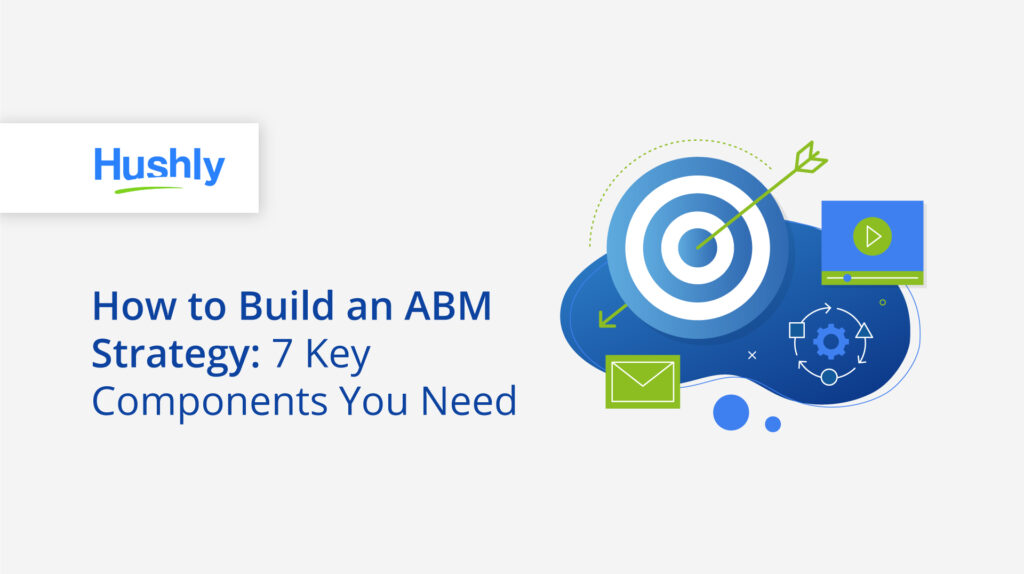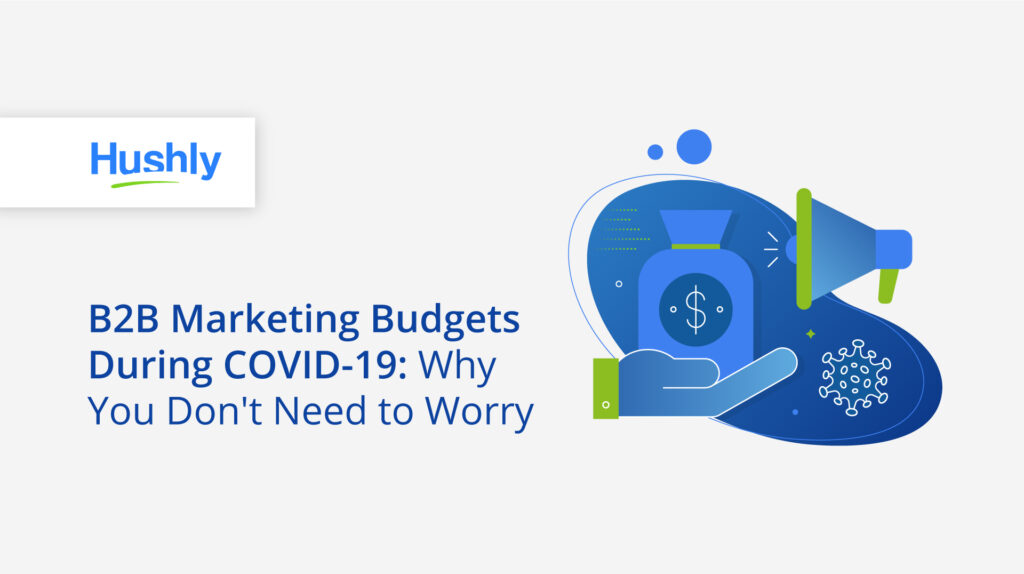Filters
Content Type
Topic
Are You Spending Too Much Time on B2B Content Personalization?

Personalized content is critical for grabbing attention, earning engagement, and winning B2B leads.
85% of buyers say they will bounce if a company doesn’t personalize the very first touchpoint along the journey.
But are you spending too much time researching, developing, and delivering your B2B content personalization strategy? Probably!
Let’s go over the different strategies you can use to personalize your B2B content marketing and how they work.
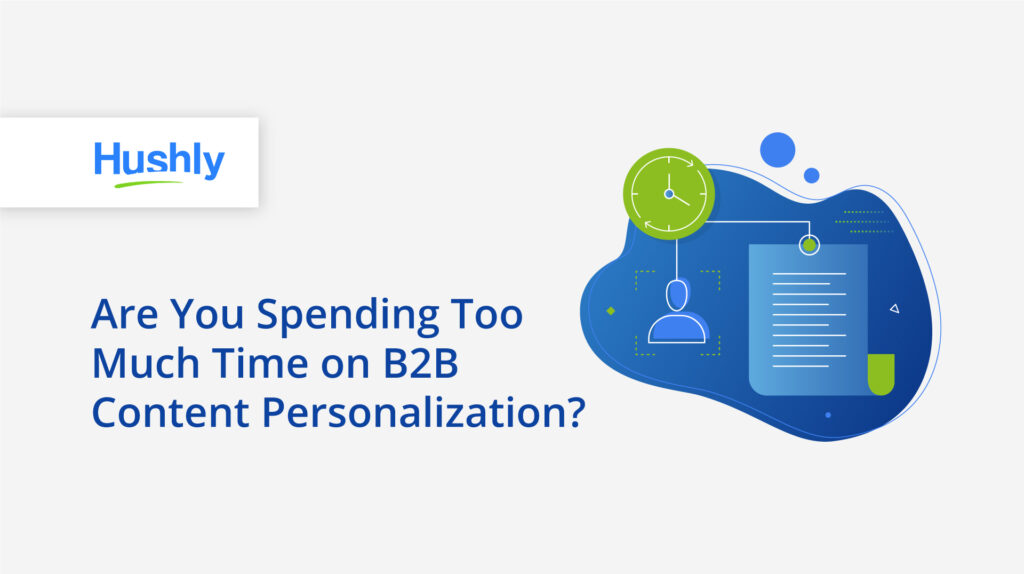
Does More Time = Better B2B Content Personalization?
You hear all the time about how important it is to research your leads and provide them with hyper-personalized content. It makes sense that 58% of B2B marketers believe the more effort they exert in their personalization strategy, the more effective it is.
But there’s a limit, isn’t there? Yes, spending time on your personalization strategy is important but it also needs to deliver results.
Spending hours studying what your leads binge on Netflix isn’t worth anything if it doesn’t earn their trust and improve their experience. Ideally, your results should either outweigh your effort or at least break even, right?
Corporate Visions ran their own personalization study to see if spending more time resulted in better results. They picked 7,000 ice-cold prospects and spent as much time and effort as they could researching every little thing about each one:
- Industry
- Company
- Personal details
- Competitor information
Next, they sent each prospect a personalized email. Corporate Visions found that emails with personal details AND company information in the subject line delivered the highest open rates.
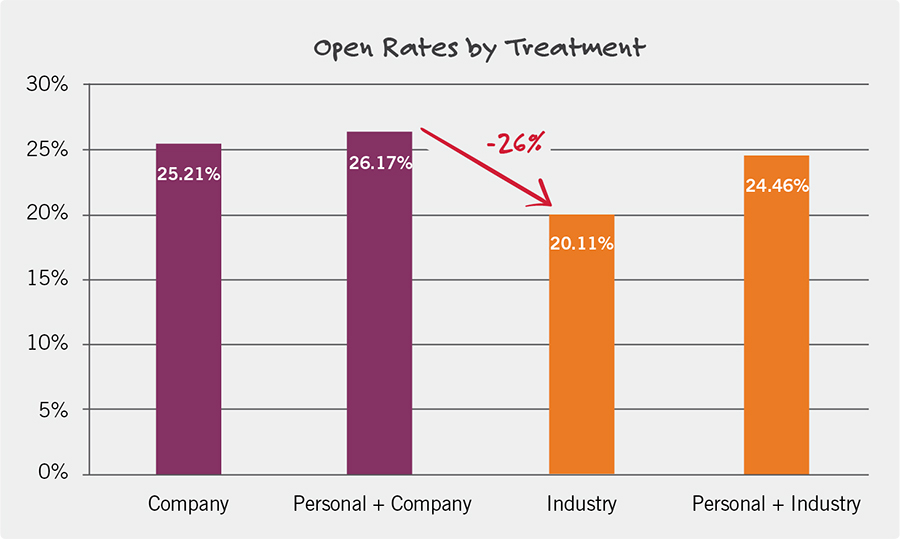
However, open rates only tell you how interesting your subject line is – not whether your content personalization strategy is effective and engaging.
When Corporate Visions looked at the click rate, the stats told a completely different story: Content personalized for the recipient’s industry delivered the highest click rates.
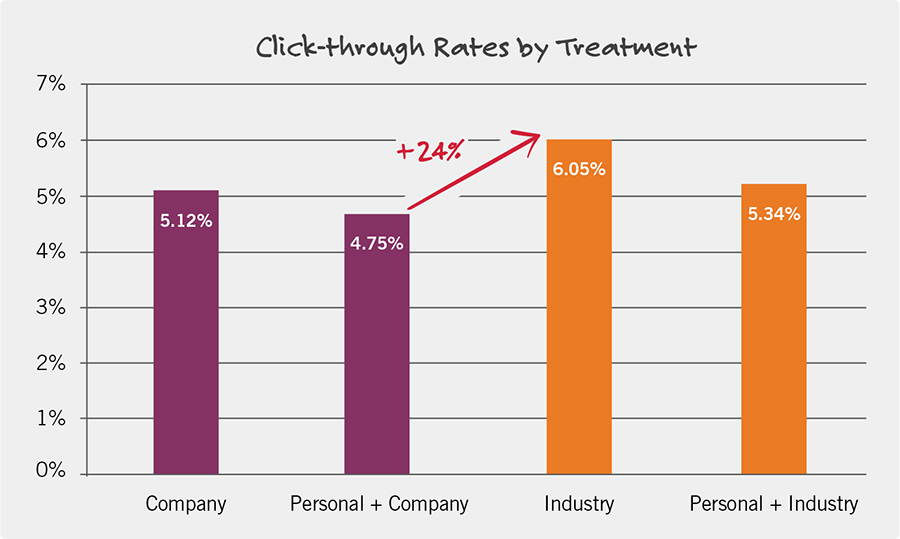
The results completely switched from that of the open rates.
Personal information certainly grabs attention because it seems like the email is coming from someone you know.
However, once the recipient opens the email, they probably feel duped when they realize it’s a marketing campaign. They might feel unsettled too and think, “how does this random company know what I ate for lunch?”
In conclusion, spending hours researching details about every lead means you’re missing the point. Hyper-personalization should equate to creating a holistic personalized experience and not necessarily sending emails with personal details to every prospect.
Inbound Vs. Outbound B2B Content Personalization Strategy
There’s another caveat to Corporate Vision’s research: It used outbound marketing tactics.
While outbound marketing certainly has its place in B2B content personalization, sending cold emails is a waste of time. You’re much better putting your energy into inbound tactics or well-placed PPC adverts.
Inbound marketing is 10x more effective for converting leads and generates 54% more leads than traditional outbound tactics. Plus, after investing in inbound marketing for five months, your cost per lead drops by 80%.
Focus on using that same research and energy to create highly relevant, valuable, and interesting content marketing assets such as:
- In-dept blogs
- eBooks
- Podcasts
- Videos
- Infographics
How to Win at B2B Content Personalization in Less Time
Corporate Vision’s research focused on creating a hyper-personalized experience for every prospect using outbound marketing tactics. Now, individual B2B content personalization is still the goal with inbound marketing – your delivery just looks different.
No, you aren’t creating hyper-personalized blog posts for a specific person at each company. That would feel intrusive. However, you could use account-based marketing to create content for
- End users at your target company
- CEOs of your target company
- Marketers at your target company
The content is still personalized on an industry and company level but it’s not intrusive because it’s helpful and relevant.
How you deliver your content is also the catalyst for creating a hyper-personalized experience. Let’s say you spent weeks developing content for prospects who work for non-profits. You might have organized all this content in one menu item titled “non-profit resources.”
If someone arrives at your blog from a social media link or landing page, you must rely on the visitor seeing this menu item if you want them to discover all your amazing personalized content.
That’s not effective either. It puts the burden on your visitor to find your relevant content.
Artificial intelligence and machine learning do the opposite: They create a hyper-personalized experience with data you’re already collecting and content you already have.
Just like Netflix or Spotify, AI tools for B2B content personalization study the behavior of each visitor on your site and use it to provide personalized content recommendations. As more visitors browse your site, the AI learns what they like and improves its content recommendations.
That’s why your YouTube music recommendations are often much more relevant than Spotify despite Spotify being a dedicated music app: YouTube simply has a much larger amount of data to work with and improve its suggestions.
What Tools Can Help You Deliver Personalized Content?
Adding an AI engine to your website might sound complicated but it’s really not. All the tedious coding work is already done and the engine works behind the scenes. You just plug it and play!
You can add artificial intelligence to your website through many tools to improve your B2B content personalization:
- Adaptive Content Hubs: You still organize your content by broad categories but when someone starts reading, the AI engine takes over and offers an endless stream of personalized content recommendations.
- Self-Nurturing Landing Pages: Instead of letting leads drop off, AI offers the best piece of content to continue guiding them down the sales funnel in an endless stream.
- Exit Intent Popups: Instead of confronting your visitors with lead forms as they try to exit your page, AI-driven popups use their on-site behavior to offer personalized content recommendations that lure them back onto the page.
The Hushly AI engine can help you harness the power of AI to drive your B2B content personalization strategy. Check out the benefits of self-nurturing landing pages and learn how they work!
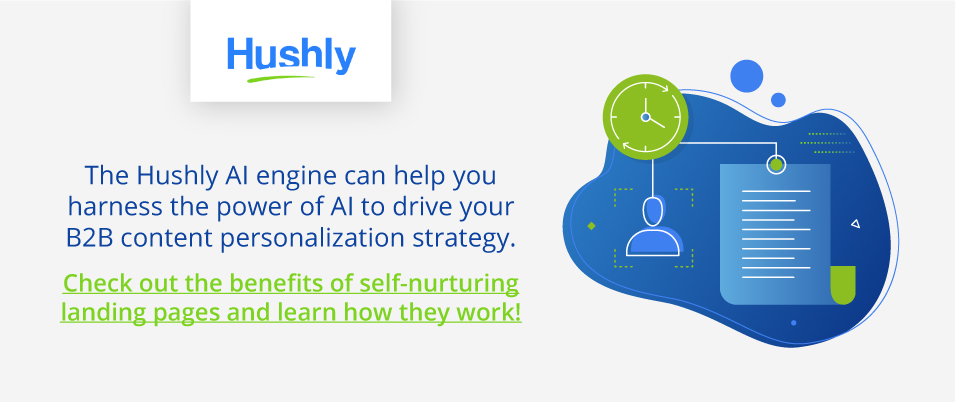
The post Are You Spending Too Much Time on B2B Content Personalization? appeared first on Hushly.

